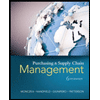Part 2 of your Marketing Plan Sections 1-5 of your Portfolio Project were completed in Module 2's Portfolio Milestone 1. This is the second part of the marketing plan Portfolio Project that will be submitted in Module 7. Here you will complete the strategic analysis of Vietnam and the AI-powered smart standing desk. You will explore the external and internal environment where the organization would operate and determine the option entry mode into this market. Part two of your plan should include all of the following areas: Local and Global Competitors Identify existing local companies that you will be competing against How are they positioned? Identify if other global companies are present in this market How are they positioned? Do you feel that you need to adapt your positioning to this market in order to compete directly against them? Situation Analysis Now that you have acquainted yourself with the international market you considering expanding to, it is time to conduct an environmental analysis of your brand relative to this market. PEST Analysis (External Environment) This is one of the most commonly used models for assessing the highly dynamic external business environment. The goal is to look at the most important aspects of each of the following areas in the international market being considered. Provide an analysis for at least 3 items for each of the following areas: (P) Political factors: the government's role in the economy Explain how tax policy, labor legislation, environmental law, trade restrictions, tariffs, and political stability can affect your foreign expansion plans. Tax policy Labor legislation Environmental law Trade restrictions Tariffs Political Stability (E) Economic factors: Economic growth expectations Exchange rates Inflation Central Bank interest rates. (S) Social factors: Health awareness Population growth rate Age distribution Career perspectives Value put on safety. (T) Technological factors: Automation Technology incentives Internet usage and availability Cell phone market penetration Any other technological elements that might affect your entry into this country. Analyze at least 3 factors for each component of the PEST Analysis. SWOT Analysis (Internal Environment) The focus of your analysis here is the organization within the international market context. You need to identify strengths, weaknesses, opportunities, and threats related to business potential operations in the selected country. Bear in mind that a SWOT analysis assumes that strengths and weaknesses are part of the internal organizational environment, while opportunities and threats are more commonly found outside. You need to identify factors for each of the following areas and present them in a matrix format (four-quadrant table): : (S) Strengths (W) Weaknesses (O) Opportunities (T) Threats List 3 items under each quadrant of the SWOT Analysis.
Part 2 of your Marketing Plan
Sections 1-5 of your Portfolio Project were completed in Module 2's Portfolio Milestone 1. This is the second part of the marketing plan Portfolio Project that will be submitted in Module 7. Here you will complete the strategic analysis of Vietnam and the
Local and Global Competitors
- Identify existing local companies that you will be competing against
- How are they positioned?
- Identify if other global companies are present in this market
- How are they positioned?
- Do you feel that you need to adapt your positioning to this market in order to compete directly against them?
Situation Analysis
Now that you have acquainted yourself with the international market you considering expanding to, it is time to conduct an environmental analysis of your brand relative to this market.
PEST Analysis (External Environment)
This is one of the most commonly used models for assessing the highly dynamic external business environment. The goal is to look at the most important aspects of each of the following areas in the international market being considered. Provide an analysis for at least 3 items for each of the following areas:
(P) Political factors:
- the government's role in the economy
- Explain how tax policy, labor legislation, environmental law, trade restrictions, tariffs, and political stability can affect your foreign expansion plans.
- Tax policy
- Labor legislation
- Environmental law
- Trade restrictions
- Tariffs
- Political Stability
(E) Economic factors:
Economic growth expectations- Exchange rates
- Inflation
- Central Bank interest rates.
(S) Social factors:
- Health awareness
- Population growth rate
- Age distribution
- Career perspectives
- Value put on safety.
(T) Technological factors:
- Automation
- Technology incentives
- Internet usage and availability
- Cell phone market penetration
- Any other technological elements that might affect your entry into this country.
SWOT Analysis (Internal Environment)
The focus of your analysis here is the organization within the international market context. You need to identify strengths, weaknesses, opportunities, and threats related to business potential operations in the selected country. Bear in mind that a SWOT analysis assumes that strengths and weaknesses are part of the internal organizational environment, while opportunities and threats are more commonly found outside. You need to identify factors for each of the following areas and present them in a matrix format (four-quadrant table): :
(S) Strengths
(W) Weaknesses
(O) Opportunities
(T) Threats
List 3 items under each quadrant of the SWOT Analysis.
Unlock instant AI solutions
Tap the button
to generate a solution








